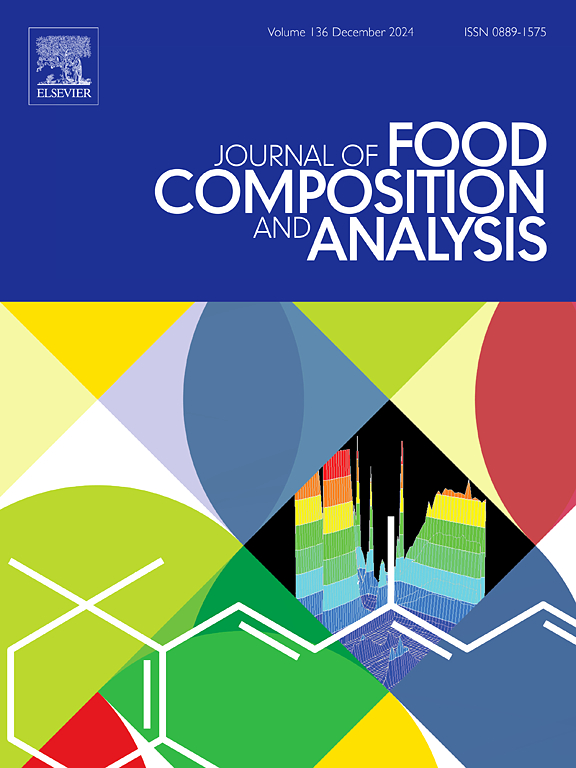Isolation and characterization of novel umami peptides from dried-salted large yellow croaker (Larimichthys crocea) and molecular docking to the T1R1/T1R3 taste receptor
IF 4
2区 农林科学
Q2 CHEMISTRY, APPLIED
引用次数: 0
Abstract
This study aimed to extract umami peptides from East China dried-salted yellow croaker (Larimichthys crocea) and explore their flavor properties and binding mechanisms. Using ultrafiltration, gel column chromatography, and reverse-phase high-performance liquid chromatography, twelve peptide components were identified, with five selected for further analysis: Asp-Leu-Tyr-Glu (DLYE), Glu-Pro-Arg-His-Thr (EPRHT), Leu-Glu-Asn-Ser (LENS), Leu-Pro-Ile-Glu-Asp (LPIED), and Ser-Phe-Arg-Ala-Asn (SFRAN). Sensory evaluation confirmed that all five peptides enhanced freshness in taste. Computational analysis, including Modeller10.2 and ZDock, revealed a high-quality model of the T1R1/T1R3 receptor, with 97.7 % of the amino acid residues within the allowable range, thereby verifying model accuracy. Usually, T1R1 and T1R3 have different conformations, and the Venus flytrap domain (VFTD) in the cavity of T1R3 is beneficial for binding umami peptides. Key binding sites (Glu65, Arg393, and Gly389) were identified in the T1R1 subunit. These findings provide insight into the flavor characteristics and binding mechanisms of umami peptides from yellow croaker, offering a theoretical foundation for their application in flavor enhancement.
求助全文
约1分钟内获得全文
求助全文
来源期刊

Journal of Food Composition and Analysis
工程技术-食品科技
CiteScore
6.20
自引率
11.60%
发文量
601
审稿时长
53 days
期刊介绍:
The Journal of Food Composition and Analysis publishes manuscripts on scientific aspects of data on the chemical composition of human foods, with particular emphasis on actual data on composition of foods; analytical methods; studies on the manipulation, storage, distribution and use of food composition data; and studies on the statistics, use and distribution of such data and data systems. The Journal''s basis is nutrient composition, with increasing emphasis on bioactive non-nutrient and anti-nutrient components. Papers must provide sufficient description of the food samples, analytical methods, quality control procedures and statistical treatments of the data to permit the end users of the food composition data to evaluate the appropriateness of such data in their projects.
The Journal does not publish papers on: microbiological compounds; sensory quality; aromatics/volatiles in food and wine; essential oils; organoleptic characteristics of food; physical properties; or clinical papers and pharmacology-related papers.
 求助内容:
求助内容: 应助结果提醒方式:
应助结果提醒方式:


